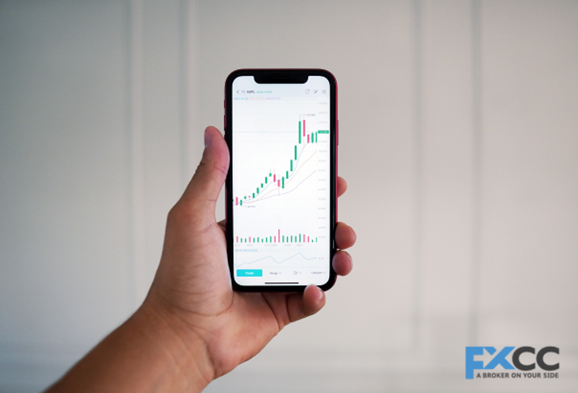Imagine a bustling marketplace where money itself is traded. That’s the foreign exchange market, or forex for short. Currencies constantly swap hands, their values rising and falling like notes in a musical piece. But unlike a melody, the forex market can feel chaotic, making it tough to know when to buy or sell. Here’s where harmonic patterns come in, acting as your personal conductor in this financial symphony.

The Fibonacci Fingerprint: Nature’s Code in the Market
Harmonic patterns are a secret language hidden within price movements. They’re based on the Fibonacci sequence, a cool math trick discovered long ago by a guy named Leonardo Fibonacci. This sequence isn’t just about numbers; it’s a pattern found in everything from seashells to sunflowers. Guess what? It turns out, this pattern also applies to the way prices move in the forex market!
Think of a price chart as a visual representation of the market’s dance. Harmonic patterns help you identify recurring price swings that match specific Fibonacci ratios. By recognizing these patterns, you can anticipate potential turning points in the market, giving you a heads-up on when the music might change.
Popular Patterns: Your Dance Partners
The forex market boasts a variety of harmonic patterns, each with its own unique signature move. Here are three of the most common ones:
- The Butterfly Effect: This pattern resembles a butterfly flapping its wings. It suggests a potential reversal after a strong trend has been playing. Imagine the butterfly’s body as the trend, and its wings as the price swings that might signal a change in direction.
- The Bat Out of Trend: Similar to the butterfly, the Bat pattern also hints at a possible trend reversal. Picture a bat silhouette formed by the price movements – the head, wings, and body all following specific Fibonacci ratios. This “bat” signals a potential shift in the market’s direction.
- The Crab Walk: This pattern is like a sideways shuffle, suggesting the current trend might continue after a short pause. Think of a crab scuttling across the sand; the price might consolidate for a bit before resuming its previous direction. Identifying the key Fibonacci retracement levels within the crab’s sideways movement is crucial.
Don’t Just Follow the Beat: Confirmation is Key
Harmonic patterns are like whispers in the market’s song, hinting at what might happen next. But remember, the forex market is a wild jazz band, not a predictable orchestra! To strengthen your trading decisions, consider these extra confirmation methods:
- Price Action: Pay attention to how the price interacts with support and resistance levels. These are like invisible walls on the chart – does the price respect these boundaries, or does it break through them with force? This can help you gauge the strength of the harmonic pattern.
- Trend Detectives: Tools like moving averages and MACD act as detectives, helping you understand the overall market direction. Is the harmonic pattern aligned with the prevailing trend, or is it suggesting a move against it?
- Volume Speaks: Imagine a concert with low attendance. Similarly, low trading volume might indicate a weaker harmonic pattern signal. Healthy trading volume often accompanies strong breakouts from these patterns.
Putting Harmony into Action: Your Trading Blueprint
Now that you’ve learned the basic steps, let’s translate theory into practice. Here’s your roadmap to incorporating harmonic patterns into your trading strategy:
- Find the Pattern: Use charting tools to scan for harmonic patterns on your chosen currency pair.
- Check the Signal Strength: Employ the confirmation techniques mentioned earlier to ensure the pattern is a reliable guide.
- Mark Your Entry and Exit Points: Leverage Fibonacci retracement levels to pinpoint potential entry and exit points for your trade.
- Risk Management is King: Always prioritize managing your risk. Use stop-loss orders to limit potential losses, and ensure the size of your trade aligns with your overall risk tolerance.
- Discipline is Your Maestro: It’s tempting to chase quick profits, but resist the urge to deviate from your trading plan. Discipline is the key to long-term success in this market dance.
The Market’s Unforeseen Notes: A Word of Caution
The forex market is a complex symphony, and many factors beyond harmonic patterns can influence the music. News events, economic data releases, and central bank decisions can all trigger unexpected price movements. Remember, harmonic patterns are a tool, not a crystal ball. Use them in conjunction with other technical and fundamental analysis techniques for a well-rounded approach.

The Continuous Learning Symphony
The world of forex, like any art form, demands dedication and continuous learning. Mastering harmonic patterns is a journey, not a destination. Test your strategies on historical data, analyze both successful and losing trades, and refine your approach over time. The market’s symphony is constantly evolving, and there’s always a new lesson to be learned. The market’s symphony is constantly evolving, with new melodies and rhythms emerging all the time. By staying dedicated, continuously learning, and refining your skills, you can become a maestro of the forex market, composing your own success story. So, are you ready to step onto the dance floor and join the music?


